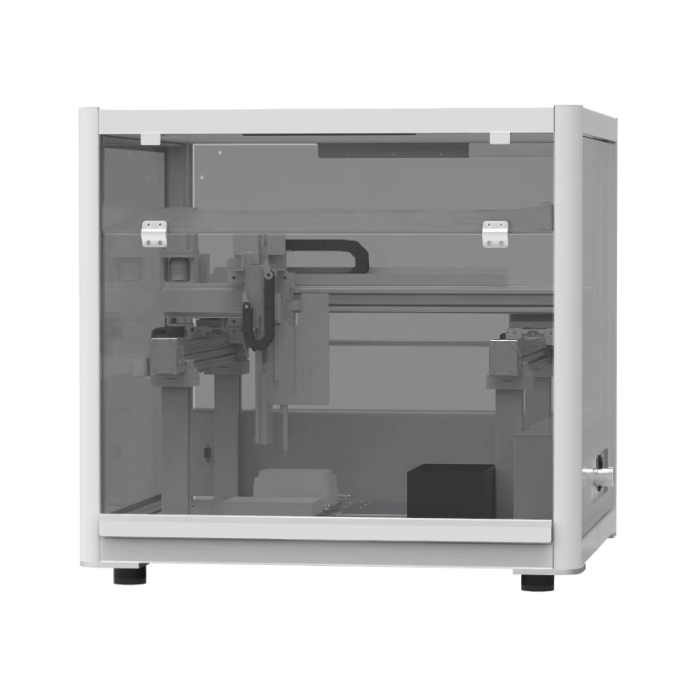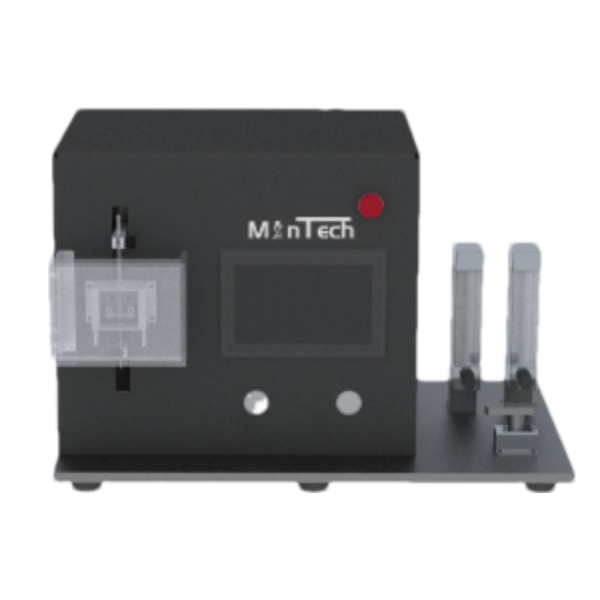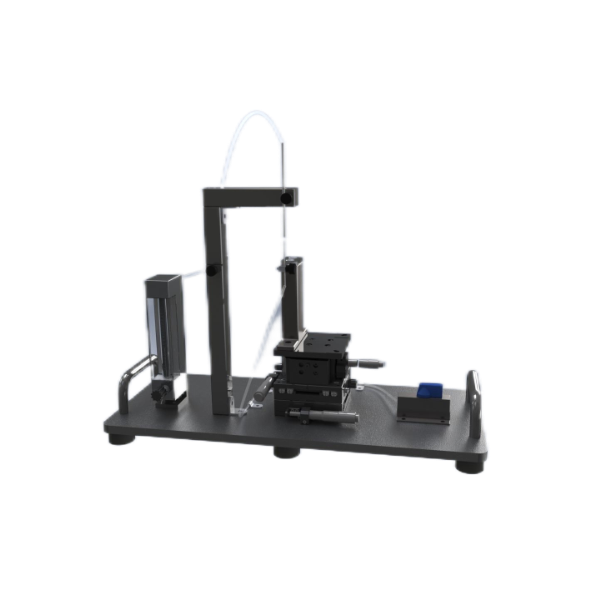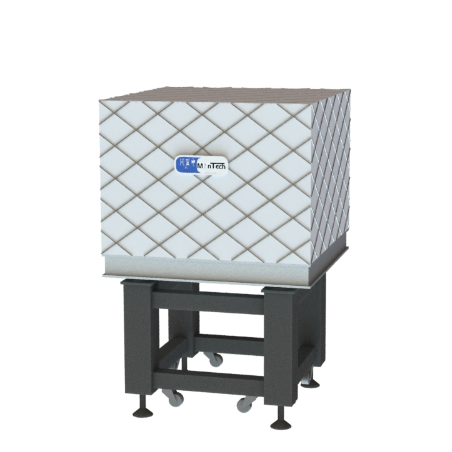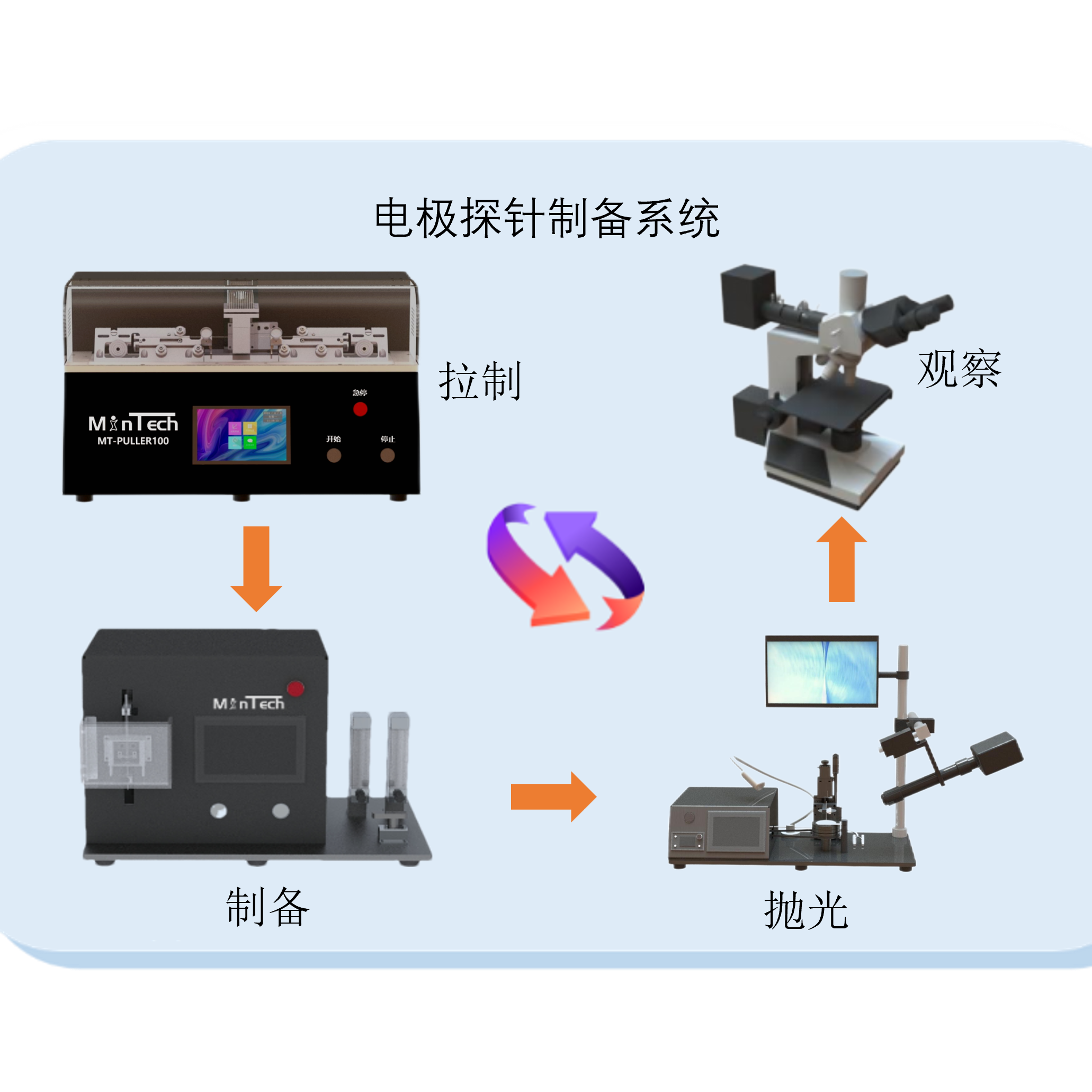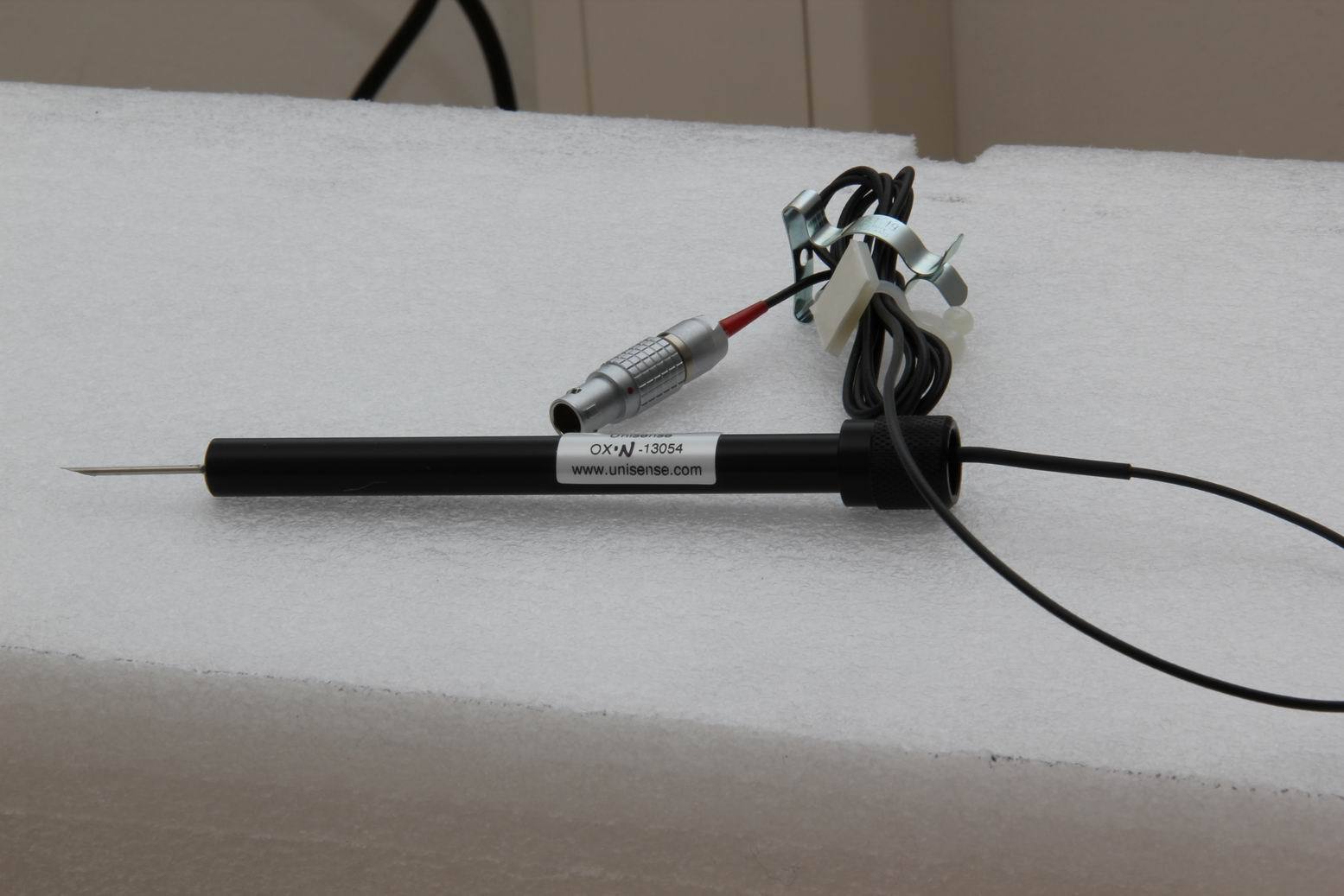
方案详情
文
是直接测定植物组织所释放的H2S气体。传统的方法包括nmol数量级的气相色谱法,但这种方法只适用于非生物样本或导致生物样品的破坏;另一种直接测试的方法就是采用 H2S微电极或电流传感器可测定活体内浓度,该测试方法具有测试精度高(测试精准度与气相色谱相近),测试响应速度快,并且不会破坏样本实现了对植物的硫化氢浓度的原位测试。
方案详情

Review Article582 Characterization of Cysteine DesulfhydrasesPlant Biology 9 (2007)583 Plant Biol. 9 (2007): 582-588O Georg Thieme Verlag KG Stuttgart· New YorkDOI 10.1055/s-2007-965424 Characterization of Cysteine-Degrading and HzS-Releasing Enzymesof Higher Plants - From the Field to the Test Tube and Back j. Papenbrock, A. Riemenschneider, A. Kamp,H.N. Schulz-Vogt, and A. Schmidt Institut fur Botanik, Universitat Hannover, Herrenhauser StraBe 2, 30419 Hannover, GermanyInstitut fur Mikrobiologie, Schneiderberg 50, 30167, Hannover, Germany Received: September 8, 2006; Accepted: April 19, 2007 Abstract: Due to the clean air acts and subsequent reduction ofemission of gaseous sulfur compounds sulfur deficiency becameone of the major nutrient disorders in Northern Europe. Typicalsulfur deficiency symptoms can be diagnosed. Especially plantsof the Cruciferae family are more susceptible against pathogenattack. Sulfur fertilization can in part recover or even increaseresistance against pathogens in comparison to sulfur-deficientplants. The term sulfur-induced resistance (SIR) was introduced,however, the molecular basis for SIR is largely unknown. Thereare several sulfur-containing compounds in plants which mightbe involved in SIR, such as high levels of thiols, glucosinolates,cysteine-rich proteins, phytoalexins, elemental sulfur, or HzS.Probably more than one strategy is used by plants. Species- oreven variety-dependent differences in the development of SIRare probably used. Our research focussed mainly on the releaseof HzS as defence strategy. In field experiments using differentBrassica napus genotypes it was shown that the genetic differ-ences among Brassica genotypes lead to differences in sulfurcontent and L-cysteine desulfhydrase activity. Another field ex-periment demonstrated that sulfur supply and infection withPyrenopeziza brassica influenced L-cysteine desulfhydrase activityin Brassica napus. Cysteine-degrading enzymes such as cysteinedesulfhydrases are hypothesized to be involved in HzS release.Several L-and D-cysteine-specific desulfhydrase candidates havebeen isolated and partially analyzed from the model plant Arabi-dopsis thaliana. However, it cannot be excluded that H,S is alsoreleased in a partial back reaction of O-acetyl-L-serine(thiol)-lyase or enzymes not yet characterized. For the exact determi-nation of the HzS concentration in the cell a HzS-specific micro-sensor was used the first time for plant cells. The transfer of theresults obtained for application back on Brassica was initiated. Key words:Arabidopsis thaliana, Brassica napus, cysteine, desulf-hydrase,HzS. Abbreviations: D-CDes: D-cysteine desulfhydrase L-CDes: L-cysteine desulfhydrase OAS-TL: O-acetyl-L-serine(thiol)lyase PLP: pyridoxal5'-phosphate ( ISSN 1435 - 8603 ) SIR: sulfur-induced defenceSED: sulfur-enhanced defence Introduction Due to the clean air acts, atmospheric sulfur was reduced dur-ing the 1980s. The role of deposited sulfur in the resistance ofcrops to diseases became obvious at the end of the 1980swhen sulfur deficiency became a widespread nutrient disorderin European agriculture (Schnug et al., 1995). Different fieldsurveys have shown that an adequate sulfur supply can in-crease the resistance of agricultural crops to fungal pathogens(Schnug et al.,1995). The phenomenon was named sulfur-in-duced resistance (SIR). The sulfur metabolism of plants offersseveral possibilities to combat pathogen attack. Different me-tabolites were investigated within the framework of the sulfurresearch group and elsewhere with respect to their role in SIR.One can discriminate among constitutively formed sulfur de-fence compounds belonging to the phytoanticipins, which arepresent before challenge by microorganisms and involved indefence against first infections, and pathogen-induced sulfurdefence compounds belonging to the phytoalexins, which aresynthesized by and accumulated in plants after exposure tomicroorganisms. One should remember that most of the sulfurdefence compounds are not exclusively designed for patho-gen-specific defence operations. Sulfur-containing defence compounds range from elementalsulfur to complex proteins. The pool of the thiol cysteine istightly regulated due to its toxicity and is not increased by ex-cess sulfate supply. On the other hand, the reduced form of thetripeptide glutathione, functioning in general as a redox bufferand an antioxidant, increases with excess sulfate supply. Glu-cosinolates, chemically thioglucosides, are the best knownpPrIeformed defence compounds. Upon contact with herbivoresor after disruption of a cell compartment, glucosinolates aredegraded by thioglucosidases/myrisonases to several break-down products, such as nitriles, isothiocyanates,thiocyanates,and epithionitriles. These degradation products were shown torepresent defence-active components and have been shown toact as antimicrobials. However, so far it has only been shownunambiguously that some glucosinolates are involved in de-fence against herbivores; whereas their role in defence againstphytopathogenic microorganisms is less well understood (Gia- moustaris and Mithen, 1997). Glucosinolates increase with ex-cess sulfate supply and decrease in sulfur limitation (Hirai etal.,2005). There are a number of sulfur-rich proteins belongingto different classes of thionins and defensins. In vitro assayshave demonstrated that these proteins are toxic to a widerange of fungi, some bacteria and other pathogens (Bohlmannand Apel,1991). Phytoalexins, such as brassicin and the D-cys-teine-containing camalexin, form another group of sulfur-con-taining defence compounds derived from amino acids and aretoxic to several species of fungi (Kliebenstein, 2004) (for de-tails see other contributions in this issue). Elemental sulfur is known as mankind's oldest fungicide andhas been applied in agriculture and viniculture for a long time(Williams and Cooper, 2004). However, only recently was itfound that elemental sulfur accumulates in the vascular tissueof resistant cacao and tomato varieties in response to infectionwith Verticillium dahliae (Cooper et al., 1996; Resende et al.,1996; Williams et al., 2002). The vascular bundles are probablyblocked by the accumulation of sulfur and microorganisms areunable to spread and grow in these vascular bundles (Williamset al., 2002;Williams and Cooper, 2004). In tomato, attemptshave been made to isolate the genes responsible for the forma-tion of elemental sulfur, using a differential display techniquethat resulted in the isolation of a sulfur transferase cDNA spe-cifically induced, among others, in a resistant tomato line (Jon-athan Howard, Rothamsted, UK, personal communication).However, the involvement of this class of enzymes in the accu-mulation of elemental sulfur has not yet been investigated. Several volatile compounds containing reduced sulfur, suchas H2S, carbonyl sulfide, carbon disulfide, dimethyl sulfide,or methylmercaptan, have been identified in higher plants(Schroder, 1993). It was shown that H2S is cytotoxic and there-fore a relationship between increasing HzS emissions and theresistance of crops to pests and diseases is possible (Beau-champ et al., 1984; Schroder, 1993). We focussed mainly onthe working hypothesis that release of H S is involved in plantdefence mechanisms. We were interested in analyzing the en-zymatic basis for the formation of HS. Cysteine desulfhydras-es, which degrade cysteine into HS and alanine or HS, pyru-vate, and ammonium are good candidates for H S-releasingenzymes. In addition, the sulfide concentration (representingall three forms of sulfide, HS, HS-, and S2-) in the plants andamounts of HS released by the plants were of interest in ourresearch. Correlations between Sulfur Status, Pathogen Infection,and Cysteine Desulfhydrase Activity Determined in FieldExperiments with Brassica napus To examine the working hypothesis that the evolution of HzS isinvolved in SIR, ten winter oilseed rape lines (Brassica napus L.)showing a broad variation in their genetic pedigree were se-lected, and leaf samples were taken just before flowering. Theactivities of L-cysteine desulfhydrase and of O-acetyl-L-ser-ine(thiol)lyase (OAS-TL) were determined in soluble proteinextracts, and the total sulfur content was determined by X-rayspectroscopy. L-cysteine desulfhydrase releases HS duringcysteine degradation, while OAS-TL consumes sulfide duringcysteine synthesis, and free HzS appears to only be released ina minor reaction. The higher the sulfur content in plants, thelower was the L-cysteine desulfhydrase activity and the higher was the OAS-TL activity. For the first time, a correlation be-tween enzymatic HzS evolution from L-cysteine and the totalsulfur content, which is an indicator for the sulfur nutritionalstatus of the crops, was found. The results showed that geno-typic differences are responsible for differences in total sulfurcontents and cysteine desulfhydrase activities, at least in oil-seed rape (Burandt et al., 2001 a). A further field experiment was conducted to analyze the influ-ence of sulfur fertilization on fungal infections. Two levels ofnitrogen and sulfur fertilizers and two varieties of oilseed rapewere investigated to examine correlations in the potential torelease HS through the enzymatic activity of L-cysteine de-sulfhydrase and OAS-TL. All plots of the field trial were infectedwith Pyrenopeziza brassicae, causing the economically impor-tant light leaf spot disease, and leaf disc samples were takenfrom visibly infected leaf areas and apparently uninfectedareas to investigate the reaction to the infection in relation tothe treatments. Sulfur fertilization significantly increased thecontents of total sulfur, sulfate, organic sulfur, cysteine, andglutathione in the plants, but decreased the L-cysteine desulf-hydrase activity. Infection with Pyrenopeziza brassicae in-creased cysteine and glutathione contents and also increasedthe L-cysteine desulfhydrase activity. Therefore, crops reactedto a fungal infection by increasing their potential to release HzS(Bloem et al., 2004). Identification and Characterization of CysteineDesulfhydrase Proteins What are the molecular and enzymatic bases for cysteine deg-radation and HS release, and therefore in part for differencesin sulfur metabolism? Several candidate proteins probably ex-ist in higher plants which might be involved in H S release.The enzyme in animals and bacteria which acts as a cysteinedesulfhydrase is known as cystathionine y-lyase (EC 4.4.1.1). Itis a multifunctional pyridoxal 5'-phosphate (PLP)-dependentprotein which cleaves L-cystathionine to yield L-cysteine, am-monium, and o-ketobutyurate. It can also utilize L-homoser-ine, L-cystine, and L-cysteine as substrates.The plant enzymesdescribed so far do not appear to have this wide specificity(Staton and Mazelis, 1991). The production of H2S from L-cys-teine by an L-cysteine desulfhydrase (EC 4.4.1.1) in higherplants was first reported by Harrington and Smith (1980). Theyutilized cultured tobacco cells and found sulfide and pyruvatewere produced in equimolar amounts from L-cysteine. Later,the existence of L-cysteine desulfhydrases was observed inseveral studies using different plant species (Rennenberg,1983; Rennenberg and Filner, 1983; Rennenberg et al., 1987;Schitz et al., 1991). However, purification of a candidate pro-tein, and subsequent microsequencing for identification, wasnot reported at that time. There are several candidates for cys-teine desulfhydrases in Arabidopsis. At least two of them areprobably involved in iron-sulfur cluster biosynthesis (Kushniret al., 2001; Leon et al., 2002; Pilon-Smits et al., 2002). In gen-eral, this kind of PLP-containing L-cysteine desulfhydrase inArabidopsis, and also in other species, provides a persulfidesulfur for transfer to various molecules,such as small cofactormolecules and proteins (Mueller, 2006). It catalyzes the forma-tion of L-alanine and elemental sulfur or H S from L-cysteine.For this reaction,two mechanisms are possible: elemental sul-fur is released enzymatically from L-cysteine and reduced tosulfide non-enzymatically with L-cysteine or dithiothreitol contained in the reaction mixture; alternatively, L-cysteineand dithiothreitol serve as reducingagents in the enzyme re-action and HS is produced inherently. For a detailed descrip-tion of possible cysteine desulfhydrase reactions, see Schmidt(2005). When no other electron donor is available, elementalsulfur is released. Both molecules could function as sulfur-con-taining defence compounds (see next paragraph).The cysteinedesulfhydrases analyzed so far are localized in the mitochon-dria (AtNFS1/AtNifS, At5g65720, Kushnir et al.,2001), in theplastids (AtNFS2/AtSUF, At1g08490, Leon et al., 2002; Pilon-Smits et al., 2002), and in the nucleus (L-CDesI, At3g62130,Riemenschneider and Papenbrock,unpublished results). Thereare even further candidates, such as At5g26600 which is an-notated as a selenocysteine lyase, homologous to CsdB fromE. coli, and, with a lower similarity, At1g01010 annotated as atranscription factor. So far, it is not known whether these pro-teins contribute to the HS release activity determined incrude plant extracts, and if so, to what extent they contributeto the H S release or whether further proteins are involved inHzS-releasing reactions. In several organisms, D-cysteine desulfhydrase activity (EC4.4.1.15), decomposing D-cysteine into pyruvate, HzS, and am-monium, has been measured (Nagasawa et al., 1985,1988).Similar activity was detected in several plant species, such asSpinacia oleracea, Chlorella fusca, Cucurbita pepo,Cucumis sati-vus and in suspension cultures of Nicotiana tabacum (Schmidt,1982; Schmidt and Erdle, 1983; Rennenberg, 1983; Rennen-berg et al.,1987). In all publications cited, the D-cysteine de-sulfhydrase activity could be clearly separated from L-cysteinedesulfhydrase activity, by demonstrating different pH optimafor enzyme activity (Schmidt, 1982), different sensitivity to in-hibitors (Rennenberg et al.,1987), and different localizationsin the cell (Rennenberg et al., 1987). The D-cysteine desulfhy-drase protein from E. coli is a PLP-containing enzyme. It cata-lyzes the o, B-elimination reaction of D-cysteine and of severalD-cysteine derivatives, and also the formation of D-cysteine orD-cysteine-related amino acids from B-chloro-D-alanine in thepresence of various thiols or from O-acetyl-D-serine and H S(Nagasawa et al.,1985,1988). The physiological role of bacteri-al D-cysteine desulfhydrase is unknown. Studies have indicat-ed that E. coli growth is impaired in the presence of micromo-lar amounts of D-cysteine (Soutourina et al.,2000). To assessthe role of D-cysteine desulfhydrase in adaptation to D-cys-teine, a gene encoding the putative D-cysteine desulfhydrasewas isolated (protein accession number D64955) (Soutourinaet al., 2001). The amino acid sequence deduced from thisgene is homologous to those of several bacterial1-aminocyclo-propane-1-carboxylate (ACC) deaminases. However, the E. coliYedO protein did not use ACC as substrate, but exhibited D-cys-teine desulfhydrase activity. Yedo mutants showed hypersen-sitivity to the presence of D-cysteine in the culture medium.It was suggested that D-cysteine exerts its toxicity through in-hibition of threonine deaminase. On the other hand, the pres-ence of the yedO gene stimulates cell growth in the presence ofD-cysteine as sole sulfur source because E. coli can utilize HSreleased from D-cysteine as a sulfur source. Consequently,yedo expression was induced by sulfur limitation (Soutourinaet al., 2001). In the Arabidopsis genome, a gene homologous toyedo has been identified (Soutourina et al.,2001)(At1g48420).The putative D-cysteine desulfhydrase (D-CDes)-encodingcDNA was amplified by RT-PCR from Arabidopsis, the proteinwas expressed in E. coli, and the purified protein was analyzed enzymatically. This protein was shown to exhibit D-cysteinedesulfhydrase activity, with the products being pyruvate, H2S,and ammonium. The Km for D-cysteine was determined as0.25 mM.Only D-cysteine, but not L-cysteine, was accepted assTh,ubstrate by D-CDes.The activity was inhibited at low micro-molar concentrations by aminooxyacetic acid and hydroxyl-amine,inhibitors specific for PLP-dependent proteins. The nu-clear-encoded protein was transported into mitochondria, asdemonstrated by various methods. D-CDes RNA levels in-creased in developing Arabidopsis but decreased in senescentplants; D-CDes protein levels remained almost unchanged inthe same plants, whereas specific D-cysteine desulfhydrase ac-tivity was highest in senescent plants. In plants grown in a 12 hlight/12 h dark rhythm, D-CDes RNA levels were highest in thedark, whereas protein levels and enzyme activity were lowerin the dark than in the light, indicating post-translational reg-ulation. Plants grown under low sulfate concentrationsshowed an accumulation of D-CDes RNA and increased proteinlevels, the D-cysteine desulfhydrase activity was almost un-changed (Riemenschneider et al., 2005 d).Recently, a secondArabidopsis protein (At3g26115) was isolated that exhibitsD-cysteine desulfhydrase activity in vitro (Riemenschneideret al., 2005a). The main physiological role of D-cysteine andD-cysteine desulfhydrases are not yet known. A number offunctions have been proposed. The biosynthesis might be spe-cific for L-amino acids, the degradation might occur via thecorresponding D-amino acids. This separation could facilitatethe regulation of synthesis and degradation by a compartmen-tation of amino acid concentration without a special compart-ment (Schmidt, 1982).Therefore,D-cysteine might be involvedin dissimilatory sulfur metabolism. H S is also generated by sulfite reductase in the process of sul-fate assimilation, where altogether eight electrons have to beprovided to reduce sulfate to sulfide, and cysteine is finallysynthesized from HzS and O-acetyl-L-serine (Leustek, 2002).If cysteine formation does not consume all sulfide synthesizedby sulfite reductase, HS could be emitted to the environment.H S formed in this way would be generated within the plastids,since sulfite reductase is thought to be exclusively localizedin the plastids, at least in Arabidopsis and tobacco (Leustek,2002). Determination of H S release and sulfide concentrationwithin the cells of sulfite reductase mutants could clarify this.Interestingly, sulfite reductase antisense and sulfite reductaseRNAi mutants do not show a phenotype that differs from wild-type plants, although, in Arabidopsis, sulfite reductase is a sin-gle copy gene (Hell and Papenbrock,unpublished results). To be able to transfer the results of cysteine desulfhydrases andputative H S-releasing proteins obtained with the model plantArabidopsis to the crop plant oilseed rape, orthologous se-quences to AtNFS1, AtNFS2, L-CDesI, and D-CDesI have beenidentified and partially amplified (Riemenschneider, 2006). Inthe tetraploid genome of oilseed rape one would expect atleast two orthologous genes corresponding to each Arabidopsisdesulfhydrase; however, to date, the oilseed rape genome hasonly been partially sequenced. To analyze the most interestingoilseed rape lines characterized in field trials (Burandt et al.,2001 a,b) at the molecular and enzymatic level, and to com-pare resistant with susceptible lines in dependence on sulfurstatus and infection under controlled conditions, different ex-perimental approaches have been applied. Oilseed rape plantswere grown in the greenhouse and leaves were infected with different pathogenic bacteria. Leaves were also incubated inwet-chamber trials using different pathogenic fungi. Finally, asmall-scale hydroponic culture system was developed for con-trolled infection with fungal spores, such as Verticillium dah-liae. In summary, the results obtained show differences be-tween the oilseed rape lines investigated in the field trials withrespect to infection levels, L-cysteine desulfhydrase activity,sulfur status, and cysteine desulfhydrase expression (Riemen-schneider, 2006). Interestingly, in vitro recombinant OAS-TL proteins releasedHS from L-cysteine in the presence of dithiothreitol. In a mo-lar ratio, the enzymes formed about 25 times more cysteinethan H2S per mg protein during the same incubation time, sug-gesting that HS release is a side reaction of the OAS-TL reac-tion. Thus, in vitro, the reaction of OAS-TL is a net HS-consum-ing reaction (Burandt et al., 2001 a,2002). However, recently,using a more sensitive enzyme assay, it was shown that thereversible reaction of cysteine synthesis, catalyzed by OAS-TLin vitro, is unlikely to deliver significant amounts of H S in vivodue to kinetic constraints (Wirtz et al., 2004). To analyze the invivo relevance of these in vitro results, OAS-TL potato antisenseplants were investigated (Riemenschneider et al., 2005c). Inparallel with the reduction of OAS-TL activity in the OAS-TLantisense plants, L-cysteine desulfhydrase activity was re-duced. In the transgenic plants carrying an OAS-TL antisenseconstruct against the cytosolic OAS-TL, the effects were morepronounced than when the plastidic OAS-TL was reduced inan antisense approach. The results demonstrate that in vivothe OAS-TL proteins also catalyze the release of HS from cys-teine or are somehow involved in HS release. However, incomparison to the reduction in OAS-TL activity, the level ofreduction in HS-releasing activity was not as strong (Rie-menschneider et al., 2005c). On the other hand, the specificactivities in crude plant extracts are about 10 times higher forthe OAS-TL activity (2 nkat [mg protein]-1) than for the L-cys-teine desulfhydrase activity (200 pkat [mg protein]-1) (Bur-andt et al., 2002); therefore, OAS-TL proteins contribute toHS release. One should also remember that, in the p-cyanoa-lanine synthase reaction, HzS and p-cyanoalanine are formedin equimolar amounts (specific activity: 300 pkat [mg pro-tein]-1). Most of the OAS-TL proteins also possess p-cyanoala-nine synthase activity. One can assume that HS-releasing ac-tivity did not result exclusively from the side activity of OAS-TLand p-cyanoalanine synthase proteins, but required other en-zymes such as true L-cysteine desulfhydrase proteins, as de-scribed above, or even not yet identified proteins. Fumigating cucurbit plants with HS increased the thiol con-tent of the cotyledons and primary leaves but markedly de-creased the activity of the L- and D-cysteine desulfhydrases(Schiitz et al.,1991). When leaf homogenates were exposed toHzS, the thiol content increased 16-fold. The addition of py-ruvate and ammonium ions or various inhibitors of cysteinedesulfhydrase, such as hydroxylamine, to the homogenate dur-ing fumigation significantly decreased the amount of thiolsformed. Since these inhibitors did not affect the in vitro activi-ty of OAS-TL, it was suggested that the increase in thiol contentmay be due to reversal of the cysteine desulfhydrase reaction(Mazelis, 1993). However, this reverse reaction could not bedetermined in vitro using the recombinant cysteine desulf-hydrases characterized so far. In future, research should be fo-cussed on the characterization of Arabidopsis T-DNA insertion mutants and the production and characterization of transgenicoilseed rape plants in order to further investigate the role ofcysteine desulfhydrases in HzS release and pathogen defence. Evidence for HzS as a Sulfur Defence Compound The impact of atmospheric HS on plants is two-fold, depend-ing on the actual tissue concentration. On the one hand, it maybe utilized as a sulfur nutrient, and on the other hand, above acertain threshold level it may negatively affect plant growthand functioning (De Kok et al.,2000). The predominant naturalsources of H S in terrestrial ecosystems are the biological de-cay of organic sulfur and the activity of dissimilatory sulfate-reducing bacteria (Bates et al., 1992; Beauchamp et al.,1984).Plants also contribute about 2 to 3 kg per hectare and year tobiogenic H S emissions (Schroder, 1993). H S is supposed tobe highly fungi-toxic (Beauchamp et al.,1984). Toxic H2S con-centrations for specific plant species and pathogens have notbeen determined in detail. To prove our hypothesis, data forHS toxicity on plants and microorganisms must to completed.Even for the model plant Arabidopsis, the required data are notavailable. Therefore the effects of elevated atmospheric HzSlevels (0.25, 0.5, and 0.75 uL L-1) were investigated in Arabi-dopsis. HzS concentrations of 0.75 uL L-caused lower levelsof expression of several genes involved in cysteine biosynthe-sis and degradation, combined with mild symptoms of oxi-dative stress, as a consequence of HzS phytotoxicity (Riemen-schneider et al., 2005b), whereas fumigation with 0.5ul L-1HzS (about 0.021 umol L-1) has, for example, positive thiol-in-creasing effects. So far, the concentration of H S in the apoplastic space and inthe different compartments of the plant cell have neither beendetermined in fumigation experiments nor with any other ex-perimental approach, due to technical limitations. Precisemethods need to be developed to measure HS in the apoplastand in the symplast(see below). At pH 7.0, a typical pH valuefound in mitochondria, about 50% of sulfide in solution is pres-ent as HS and is presumed to be membrane-diffusible. Thediffusibility of H S via membranes at certain pH values mightbe an argument against its role in pathogen defence, becausethere are a number ofessential physiological processes in thecell which are already inhibited by HS at low concentrations.HS has a binding affinity to chelated iron in the same range ascyanide or oxygen, thus blocking respiration and ATP forma-tion. Oxygen uptake of isolated mitochondria from potatoesand pea leaves was inhibited (Schmidt, 2005). Our own andpublished data indicated that sulfide is a very effective inhibi-tor of cytochrome c oxidase, with a K, of about 1 uM. On theother hand, the typical pH in the chloroplast stroma is pH 8.4.At this pH value only 5% of the sulfide is found as H S and 95%as HS- which is not supposed to be membrane-diffusible. Inwhich case, most of the sulfide produced in the chloroplaststroma can be postulated to involve controlled transport tothe cytoplasm. In this compartment, at pH7.4, about 75% ofthe sulfide is HS- which might be transported into the apo-plasm. However, this hypothetical pathway has to be experi-mentally investigated and specific transporters will have tobe postulated. It is essential to clarify if H S in the physiological concentra-tion range in plants is high enough to block or reduce patho-gen attack. So far, there are no quantitative data available on HzS concentrations toxic for the proliferation of phyto-pathogenic fungi and bacteria. High HS concentrations mightact locally where fungi or bacteria attack. Here, local releaseof HS might prevent germination of spores or stop growthof fungal hyphae. HzS might also act more indirectly: due toits high oxidative potential, it could induce the formation ofreactive oxygen species. The local formation of reactive oxy-gen species might have direct toxic effects on the growth ofphytopathogenic microorganisms. HzS could also function asa signal molecule due to its membrane-crossing potential andinduce the well-known cascades of pathogen defence mecha-nisms. Depending on the type of pathogen and its infectionstrategy, a combination of different HS functions is possible.Direct assays of plants that enhance H2S release upon patho-gen attack need to be done to clarify the mechanism of H Saction. The results of field experiments, where the release ofH2S was determined in plants under different nutritional con-ditions and in relation to a microbiological infection, couldfurther elucidate the role of H S in pathogen defence (for de-tails see Bloem et al., 2007). Finally, H2S produced by cysteinedesulfhydrases could be directly oxidized in the presence of anelectron donor to elemental sulfur, which is well accepted as asulfur-containing defence compound; other enzymes, such assuperoxide dismutase, might also catalyze HS-oxidation to el-emental sulfur (Searcy, 1996). Next to cysteine desulfhydrases,sulfurtransferase proteins might also be involved in the releaseof HzS (Schmidt, 2005) or the formation of elemental sulfur,since several sulfurtransferases have been shown to be in-duced by pathogen attack in microarray analyses. An Experimental Approach: Determination of HzS in PlantTissue Using an Amperometric Microsensor During the course of our experiments, it became more andmore obvious that direct measurements of sulfide, both in thecell and HS released by the cell, were required to finally clarifyits role in sulfur metabolism and in defence mechanisms. Inprevious experiments, Rennenberg et al. (1990) used a large2.6-L gas exchange cuvette to measure volatile sulfur com-pounds via gas chromatography and a connected flame photo-metric detector. The light-dependent H S emission was ap-proximately 1 nmol of H S per 1 mol H0 transpired for sprucetrees (Picea abies). H S was emitted in response to sulfur diox-ide or sulfite in a light-dependent process at rates varying be-tween 0.8 and 8.0 nmol h-1 cm-leaf area (Rennenberg, 1989).In these experiments, the overall design was rather complexand expensive. More indirect experiments with detachedleaves and leaf discs in flasks incubated with L-cysteine in themM range and with other sulfur-containing compounds haveshown that, under these conditions, H,S is emitted, as mea-sured with zinc acetate traps (Sekiya et al.,1982 a). The deter-mination of cysteine desulfhydrase activity only reflects thecapacity to release H S enzymatically from cysteine. In cooper-ation with Bodo Harazim (Federal Institute for Geosciencesand Natural Resources, Hannover, Germany),an amperometricHS sensor AMT (Analysentechnik GmbH, Rostock, Germany)was tested. The system was constructed for the determinationof HzS in relatively large volumes of liquids in the range of 10 to3000 pg L-. However, due to technical limitations, the methodwas too slow and not accurate enough for measurements inplants. There are now a number of commercially available ampero-metric microsensors for the determination of HS. These mi-crosensors are generally used to determine HzS concentrationsin sediments and biofilms. However, it was previously shownthat the HS concentration could be determined directly inliving organisms, such as cells of the giant sulfur bacterium,Thiomargarita namibiensis, with a diameter of about 750 um(Schulz and Jorgensen, 2001; Schulz and de Beer, 2002). Thesulfide microsensor for dissolved HzS is a Clark-type microsen-sor. HS diffusing through the silicone membrane at the sensortip is de-protonated in the alkaline electrolyte. The response ofthe sensor relies on the oxidation of HS-to elemental sulfur ona platinum anode through a redox mediator, (Fe[CN]6)3-. Fordetermining total [S2-], the pH of the investigated environ-ment has to be determined, because H S is an acid: [S-tot]=[HzS]+[HS-]+[S2-](www.unisense.com). It was challengingto optimize this experimental setup for H S measurements inplants. Arabidopsis thaliana (L.) Heynh. and Nicotiana tabacum L.plants have been used as experimental systems for testing theHzS microsensor (for details see Riemenschneider, 2006). TheHzS microsensor (Unisense, Aarhus, Denmark), tip size 10 um,was connected to a high-sensitivity picoampere meter (Uni-sense PA2000), and the anode was polarized against an inter-nal reference. HS from the environment penetrates the sensormembrane tip. The generated reduction in current is convertedto a voltage signal by a picoampere meter.For calibration, themicrosensor was first stabilized in1M KH PO4 buffer, pH 7.5without oxygen, and then different amounts of a 100-mMNazS solution, from 0 to 300uM, were added. The microsensorwas moved up and down in 50-um steps by a micromanipula-tor through the leaf tissue, waiting a few seconds betweeneach step. Depending on leaf age, an Arabidopsis leaf is 200 to400 um thick. A binocular microscope was used to focus on theleaf of interest.Arabidopsis leaves were placed on 1.5% agarosegel pieces, pH 7, to avoid damage to the thin microsensor tip,and measured from the upper to the lower side of the leaf. Pre-liminary profiles of H S concentrations in different layers ofthe leaves were taken (in the range of 1 to 15 uM HS). In gen-eral, younger Arabidopsis leaves and leaves of younger Arabi-dopsis plants contained higher H2S concentrations than olderleaves and older plants, in agreement with results previouslyobtained with leaves incubated in cysteine solutions (Sekiyaet al., 1982a). In tobacco plants, the HS concentration wasfound to be in the same range as in Arabidopsis. The current ex-perimental setup does not allow pH determination at the mea-suring point in the leaves; therefore, the pH-dependent exactHzS/HS-ratio could not be determined. There are a number of technical problems to solve before theH S microsensor can be used routinely with a high degree ofreproducibility for measurements in plants. The current HzSmicrosensors measure the H S concentration in plants withina radius of 10 um. In relation to the size of the plant cell and itscompartments, the diameter of the microsensor tip is quite bigand during the measurement intact cells will be destroyed, re-sulting in mixing between different cell compartments. ThepH differs in different cell compartments (e.g., Burandt et al.,2002). As the pH needs to be determined in the direct environ-ment of the sensor tip, the size of the tip needs to be reducedand for the exact determination of HS; however, miniaturiz-ing the microsensor might reduce its sensitivity. In parallel, a high-resolution microscope is required to follow the exact lo-calization of the tip. The sensitivity of the current microsensoris very high in comparison with other methods, including gaschromatography. The different layers from atmosphere to leaf,to air, to gel, constitute another problem which might be over-come using gel-imbedded leaves. Originally the system wasdeveloped for liquid environments, and, so far, measurementsare characterized by low reproducibility, and large day-to-dayvariations. It is not clear whether these variations are due totechnical problems or biological variation. Only after optimiz-ing the system this can be clarified. The technical problems described above might prevent exactdetermination of HS concentrations in cellular compart-ments, and may require the HzS microsensor to be used inclosed environments. Plants can be placed into sealed vesselsfor a limited time and the HS released by the individual plantscan be determined. Preliminary results using this techniqueare very promising and should be extended in future. Thismethod is probably superior to other methods used till date,since previous methods required large volumes to be collectedto reach the H S concentration necessary for measurement(McEwan and MacFarlane Smith, 1998; Rennenberg et al.,1990; Sekiya et al.,1982b). Summary and Outlook There is experimental evidence that cysteine-degrading andHzS-releasing enzymes are involved in defence against patho-gen attack through the formation of H S. However, an exactcausal relationship still has to be established. Whether cys-teine desulfhydrases catalyze the formation of elemental sul-fur should also be investigated. The characterization of Arabi-dopsis mutants and transgenic oilseed rape plants grown un-der hydroponic culture conditions during the project, and theirsubsequent controlled pathogen infection and application ofanalytical methods need to be refined in the future to obtaincausality rather than correlations. Our experiments and resultsfrom other groups suggest that the term sulfur-induced resis-tance (SIR) should be replaced with the term sulfur-enhanceddefence (SED), because extra sulfur nutrition does not induceresistance but rather enhances defence mechanisms andmight even act indirectly to improve plant health and resis-tance under stress (Rausch and Wachter, 2005). Bearing inmind all possible compounds involved in pathogen protection,it is also important to think about an interaction of all thesecompounds, acting together against pathogens. Acknowledgements Research in our laboratory was financially supported by grantsfrom the Deutsche Forschungsgemeinschaft in the GermanPlant Sulfur Group (FOG 383, SCHM 307/15-1 to 15-4). References ( Bates, T . S., Lamb, B. K., G uenther, A., D i gnon, J., and Stoiber, R. E. (1992) Sulfur emissions to the atmosphere from natural sources. J ournal of Atmospheric Chemistry 14, 315-337. ) ( Beauchamp, R. O., Bu s , J. S.,Popp,J. A., Bo r eiko, C. J., and Andjelko- vich, D. A. (1984) A critical review of the literature o n hydrogensulfide toxicity. Critical Reviews in Toxicology 13,25-48. ) ( Bloem, E., Riemenschneider, A., Volker, J., Papenbrock, J., Schmidt, A., Salac, I. , Haneklaus, S. , and Schnug,E. ( 2004) Sulphur supply and i nfection with Pyrenopeziza brassica in f luence L-cysteine desulfhy-drase a ctivity in Brassica napus L. Journal of Experimental Botany 55,2305-2312. ) ( Bloem, E., H aneklaus, S., Salac, I ., Wickenhauser, P . , a nd Schnug, E.(2007) F acts a nd f i ction a bout sulfur m etabolism in relation t o p lant-pathogen interactions. Plant Biology 9,596-607. ) ( Bohlmann, H. and Apel, K. (1991) Thionins. Annual Review of Plant Physiology and P lant Molecular Biology 42, 227- 2 40. ) ( Burandt,P . , Papenbrock,J., S chmidt, A., Bloem, E ., Haneklaus,S., andSchnug, E.(2001 a) Genotypical di f ferences in total sulfur contentsand c ysteine desulfhydrase activities i n B rassica napus L. P hyton41, 75-86. ) ( Burandt, P . , Papenbrock,J., S c hmidt, A., Bloem, E., Haneklaus, S., andSchnug, E . ( 2001b ) Characterization o f Brassica n apus L. l inesshowing differences in total sulfur contents and cysteine desulfhy- drase activities on the molecular l e vel. I n Plant N utrition - Food Security and Sustainability of Agro-E c osystems (Horst, W. J. e t al., eds.),Dordrecht: Kluwer Academic Publishers, pp.172-173. ) ( Burandt, P., Schmidt, A., and Papenbrock,J.(2002) Three OAS - TL iso-enzymes from Ar a bidopsis ca t alyze cy s teine sy n thesis an d cys - teine desulfuration at different pH values. Journal of Plant Physiol-ogy 159,111-119. ) ( C ooper, R . M., Resende, M. L. V., F l ood,J., Rowan, M. G., Bea l e, M. H., and Potter, U . (1996) Detection and cellular localization of elemen- tal sulphur in disease-resistant genotypes of Theobroma ca c ao.Na- ture 379,159- 1 62. ) ( De Kok, L . J., Castro, A., Durenkamp, M., Stuiver, C . E . E., Westerman,S., Yang, L., and Stulen, I. (2000) Sulphur in plant physiology.Pro-ceedings No.500, The International Fertiliser Society, Y o rk,1-26. ) ( Giamoustaris, A. a nd Mithen, R . (1997) Glucosinolates and d i seaseresistance in oilseed r a pe (Brassica na p us ssp . oleifera). Plant Pa- thology 46,271-275. ) ( Harrington, H . M. and Smith, I. K. (1980) Cysteine metabolism i n cul-tured tobacco cells. Plant Physiology 65, 1 51-155. ) ( Hirai, M. Y., Klein, M., Fujikawa, Y., Yano M., Goodenowe,D. B., Yama- zaki,Y.,Kanaya, S ., Nakamura,Y., Kitayama,M., Suzuki, H.,Sakurai, N ., Shibata, D., T okuhisa, J., Reichelt, M . , G e rshenzon, J., P a pen- b rock,J., and Saito, K.(2005)Elucidation of gene-to-gene networks i n Arabidopsis by i ntegration of metabolomics and tr a nscriptom- i cs.Journal of Biological Chemistry 280,25590-25595. ) ( Kliebenstein, D. J . (2004) Secondary metabolites and plant/environ- m ent i n teractions: a view through Ar a bidopsis thaliana tin g ed glasses.Plant, Cell and Environment 27,732-738. ) ( Kushnir, S., Babiychuk, E.,Storozhenko, S., Davey,M. W., Papenbrock,J., De Rycke, R., Engler, G., Stephan, U. W., Lange, H., Kispal, G., Lill , R ., and van Montagu, M. ( 2001) M utation of the mitochondrial ABCtransporter Sta1 leads to dwarfism a nd chlorosis i n the Arabidopsis mutant starik. Plant Cell 13,89 - 100. ) ( L eon, S., Tournaine, B., Briat,J. F., and Lobreaux,S. (2002 ) The AtNFS2 gene from Arabidopsis thaliana en c odes a Nif S -like plastidial cys- teine desulphurase. Biochemical Journa l 366,557-564. ) ( Leustek, T. (2002) S ulfate metabolism. In The Arabidopsis Book (Somerville, C . R. and M eyerowitz, E . M . , e d s.), Rockville, MD,USA: American So c iety of Pl a nt Bi o logists, A p ril 4 , 2 0 02. D O I: tS, A1 10.1199/tab.0017, http://www.aspb.org/publications/arabidopsis/. ) ( Mazelis, M. ( 1 993) Catabolism of sulfur-containing amino acids. InSulfur Ntrition a nd Assimilation in Higher Plants (De Kok , L.J.,Stu-len, I., Rennenberg, H . , B r unold, c., and Rauser, W. E ., e ds . ), TheHague: SPB Academic Publishing bv,pp.95-108. ) ( McEwan, M. and M a cFarlane Smith, W . H. ( 1 998) Identification ofvolatile organic compounds em i tted in t he fie l d by oilseed rape (Brassica napus ssp. oleifera) o ver t he growing se a son. Cl i nicaland Experimental Allergy 28,332-338. ) ( Mueller, E . G.(2006) Trafficking in persulfides: delivering sulfur inbiosynthetic pathways.Nature Chemical Biology 2, 185-194. ) ( Nagasawa,T., Ishii,T., Kumagai, H., and Yamada, H.(1985)D-cysteine desulfhydrase of Escherichia coli. Purification a nd characterization.European Journal of Biochemistry 153, 541-551. ) ( Nagasawa, T. , Ishii, T ., and Yamada,H. (1988) Physiological compari-son o f D-cysteine desulfhydrase of Escherichia coli w i th 3-chloro-D-alanine dehydrochlorinase of P s eudomonas putida CR 1 -1 . Ar- chives of Microbiology 149, 413-416. ) ( Pilon-Smits, E . A., Garifullina, G. F., Abdel-Ghany, S., Kato, S., Mihara,H., Hale, K. L., Burkhead, J. L., Esaki, N. , Kurihara, T., and Pilon, M.(2002) C haracterization o f a N ifS- l ike chloroplast protein f romArabidopsis.I m plications for its r ole in sulfur and selenium metab-olism. Plant Physiology 130,1309-1318. ) ( Rausch, T . and W achter, A . ( 2 005) Sulfur metabolism: a versatileplatform for l aunching defence operations. Tr e nds in Pl a nt Science10,503-509. ) ( Rennenberg, H . (1983) C y steine d e sulfhydrase activity in cucurbitplants: simulation by preincubation with L- and D -cysteine. Phy-tochemistry 22, 1557-1560. ) ( Rennenberg, H. ( 1989) S ynthesis and emission o f hydrogen sulfideby higher plants. ACS Symposium Series - A m erican Chemical So- ciety (USA) 393,44-57. ) ( Rennenberg, H . a n d Filner, P. (1983) D evelopmental ch a nges in t he p otential for HS emission in cucurbit plants. P lant Physiology 71 , 269-275. ) ( Rennenberg,H., Arabatzis,N., and Grundel, I. (1987) Cysteine desulp-hydrase activity in higher p l ants: e v idence for the action of L- andD- c ysteine specific enzymes. Phytochemistry 26,1583-15 8 9. ) ( Rennenberg, H. , Huber, B. , Schroder, P., Stahl, K., Haunold, W.,Georgii,H. W ., Slovik, S., and Pfanz, H . ( 1 990) Em i ssion of volatile sulfurcompounds from spruce trees. P lant Physiology 92 , 560-564. ) ( Resende, M . L.V., F l ood,J., Ramsden, J. D., R o wan, M. G., Beale, M. H. , and C ooper, R . M. (1996) Novel p hytoalexins including elemental sulphur in the resistance of c o coa (Theobroma cacao L.) to Vert i cil-lium w ilt ( Verticillium dahliae Kleb.). Physiological and MolecularPlant Pathology 48, 347-359. ) ( Riemenschneider, A . ( 2 006) I s olation and characterization o f c y s- teine-degrading and H S-releasing enzymes of h i gher plants. P hDThesis, U niversity of Hannover. ) ( Riemenschneider, A . , Bonacina, E., Schmidt, A ., and P apenbrock, J . (2005 a) I solation and characterization of a second D-cysteine de - sulfhydrase-like protein from Arabidopsis. I n Sulfur T r ansport and Assimilation in P l ants in the Post Genomic Era (Saito, K., De Kok, L.J., Stulen, I . , Hawkesford, M. J. , Schnug, E. , Sirko, A . , and Rennen- berg, H.,eds.),Leiden: Backhuys Publishers, p p.103-106. ) ( Riemenschneider, A., Ni k iforova, V., Hoefgen, R., De Kok, L. J. , and P a - penbrock,J.(2005b) Impact of e levated HzS on m et a bolite levels, activity of enzymes and e x pression of genes involved in cysteinemetabolism. P lant Physiology and Biochemistry 43,473-483. ) ( Riemenschneider, A . , R i edel, K., H oefgen, R . , P apenbrock, J . , a nd Hesse, H. (2005c) I mpact o f reduced O - acetylserine(thiol)lyase isoform contents on potato (Solanum tuberosum L .) plant metab-olism. Plant Physiology 137,892-900. ) ( Riemenschneider, A . , Wegele, R., S c hmidt, A., a n d Pa p enbrock, J.(2005d) Isolation and c haracterization of a D-cysteine desulfhy- drase protein from Arabidopsis thaliana. FEBS Journal 272,1291- 1304. ) ( Schmidt, A. (1982)A cysteine desulfhydrase from spinach leaves spe-cific for D-cysteine. Zeitschrift fur Pflanzenphysiologie 10 7 , 30 1 - 312. ) ( Schmidt, A. (2005)Metabolic background of H S release from plants. In Proceedings of the 1st Sino-German Workshop on Aspects of Sulfur N utrition of Plants (De K o k, L. J. and Schnug, E., eds.),Land- bauforschung Volkenrode 283,121-129. ) ( Schmidt, A. and E r dle, I. (1983)A c y steine d e sulfhydrase specific forD-cysteine from the green alga Ch l orella fusca. Zeitschrift fiur Na- turforschung C 38,428-435. ) ( Schnug, E., Booth, E., Haneklaus, S., an d Walker, K.C. (1995) Sulphur supply and stress resistance in oilseed rape. Proceedings of the 9th International Rapeseed Congress, Cambridge, 1995, 229-231. ) ( Schroder, P. ( 1 993) Plants as a source of atmospheric sulfur. In S ulfur Nutrition a nd S u lfur A s similation in Hi g her Pla n ts (De Kok, L. J . , Stulen, I., Rennenberg, H.,B r unold, c. , a n d Ra u ser, W. E.,eds.), The Hague: SPB Academic Publishing bv, pp.253-270. ) Schulz, H. N. and Jorgensen,B. B. (2001) Big bacteria. Annual Reviewof Microbiology 55, 105-137. ( Schulz, H. N. and de Beer,D. ( 2002) Uptake r a tes of oxygen a n d sul-fide measured with i n dividual T h iomargarita namibiensis cells by using microelectrodes. Applied and Environmental M icrobiology 68,5746-5749. ) ( Schitz, B.,De Kok, L . J., and Rennenberg, H. (1991) Thiol accumula- tion and c ysteine desulfhydrase a c tivity in H zS-fumigated leavesand l eaf homogenates of cucurbit p l ants. Plant Cell Physiology 3 2, 733-736. ) ( S earcy,D.G.(1996)HS-:02oxidoreductase activity of Cu,Zn superox-ide dismutase. Archives of Biochemistry and Biophysics 334, 50- 58. ) ( S ekiya,J . , S chmidt, A . , Wilson, L. G . , and Filner, P. (1982a) Emissionof h ydrogen sulfide by le a f tissue in response to L -c y s t eine. PlantPhysiology 70, 430-436. ) ( Sekiya,J., Wilson, L. G., and F ilner, P. (1982b) Resistance to injury b y s ulfur d ioxide: c orrelati o n with its r e ductio n to , a n d em i ssion of, h ydrogen s u lfide in Cucurbitaceae. Plant P hysiology 70, 437-441. ) ( Soutourina,J., Blanquet, S., and Plateau, P . (2000) Metabolism o f D- aminoacyl-tRNAs in Escherichia coli and S a ccharomyces cerevisiae c ells. Journal of Biological Chemistry 275,32535 -3 2542. ) ( Soutourina, J., Blanquet, S., and Plateau, P.( 2 001) Ro l e of D-cysteinedesulfhydrase in the adaptation of Escherichia coli to D -cysteine.Journal of Biological Chemistry 276, 40864-40872. ) ( Staton, A. L. and Mazelis, M. (1991) The C-S lyases of higher plants:homogeneous be t a-cystathionase of spinach leaves. Archives of B iochemistry and Biophysics 290, 46-50. ) ( Williams,J. S . and C o oper, R. M. (2004) The oldest fungicide and new-est phytoalexin - a reappraisal of t he fungitoxicity o f elemental s ulphur. Plant Pathology 53,263-279. ) ( Williams,J. S.,Hall, S. A., Hawkesford, M. J., Beale, M . H., and Cooper, R. M.(2002) Elemental s u lfur and thiol a ccumulation in tomato and d efense against a f ungal vascular pathogen. Plant Physiology 128,150-159. ) ( Wirtz, M., D roux, M., a nd Hell,R . (2004) O - acetylserine (thiol) lyase: an e nigmatic enzyme of plant cysteine biosynthesis r e visited inArabidopsis thaliana. Journa l o f Experimenta l Botany 55, 1785-1798. ) J.Papenbrock Institut fiir Botanik Universitat Hannover Herrenhauser StraBe 2 30419 Hannover Germany E-mail: jutta.papenbrock@botanik.uni-hannover.de Guest Editor: T. Rausch 硫化氢(H2S)是继一氧化氮(NO)和一氧化碳(CO)之后的出现的第三种气体信号分子, 在动物体内它的产生机制和生理作用已经被证实。近年来研究发现该信号气体分子(H2S)对植物体生长发育过程和环境胁迫应答的调控研究越来越多。 有相关研究报道黄瓜、玉米、大豆等叶片可以释放H2S。 植物体H2S的来源主要有: 通过cysteine desulphydrase(CDes)催化Cys降解生成H2S、丙酮酸盐和NH3; 也可以通过叶片吸收大气中的H2S; 或者在亚硫酸盐还原酶的作用下, 将SO32–直接还原成H2S。植物组织的内源H2S的测定有两种方法:1、直接测试法: 一是直接测定植物组织所释放的H2S气体。传统的方法包括nmol数量级的气相色谱法,但这种方法只适用于非生物样本或导致生物样品的破坏;另一种直接测试的方法就是采用 H2S微电极或电流传感器可测定活体内浓度(unisense微电极剖面系统),该测试方法具有测试准度高(测试准度与气相色谱相近),测试响应速度快,并且不会破坏样本实现了对植物的硫化氢浓度的原位测试。而另一种直接法则是利用荧光染料对 H2S进行活体定位是一种有效的方法但目前尚无商业化产品问世。近年来, 世界上多个实 验室致力于H2S荧光染料的开发研究。已报道在生物活体内可与H2S特异结合的荧光染料有SFP-1和 SFP-2、SF1、SF2和HSip-1等。它们通过不同的工作原理, 高选择性地指示H2S的含量和位置, 这将为研究其产生、转运及其生理和病理作用带来新的活力。 2、间接测定法即给予适当底物, 在一定条件下与生物样本中的CDes反应, 产生的H2S气 体与醋酸锌反应, 最终通过比色法来计算H2S的产率(类似于目前生物研究领域的使用比较多的技术-试剂盒法)。对于绿色植物而言, 应用这一方法会遇到一个问题: 所提取植物蛋白常常含有一定量的叶绿素, 测定所使用的甲基蓝法在比色时容易受叶绿素成分的干扰。目前的研究对植物H2S信号研究的不足主要有以下几个方面: (1)缺乏有效便捷的内源H2S气体的检测手段。目前主要通过光密度法(试剂盒染色)间接测定H2S的浓度, 还无法对胞内H2S的定位和浓度进行实时监测。虽然有不少研究人员致力于H2S荧光染料的研制, 但距离实际应用还有很长的路; 目前也有部分的研究报道是采用丹麦unisense公司的H2S微电极或电流传感器可测定植物体内的内源性硫化氢浓度。
确定
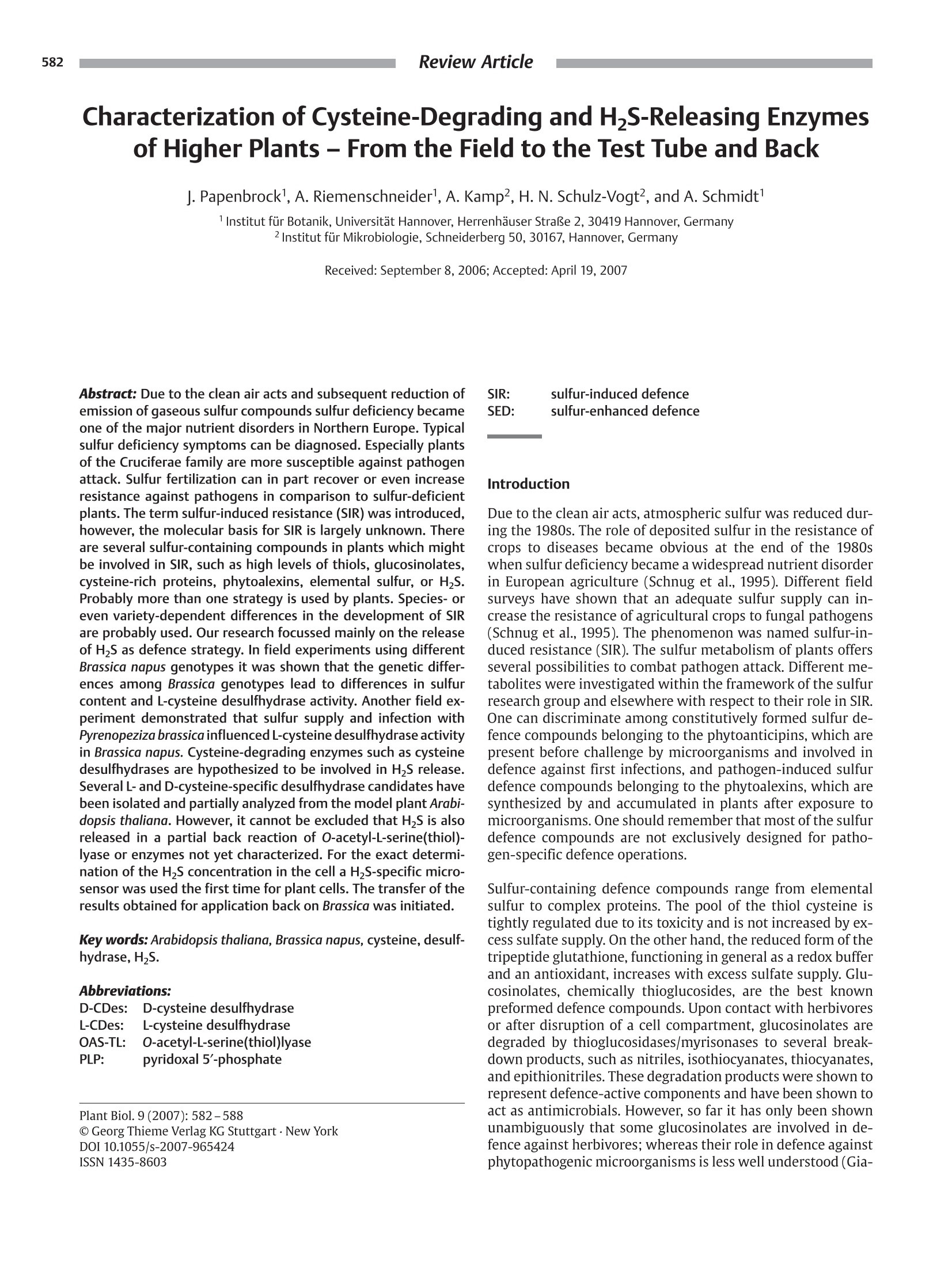
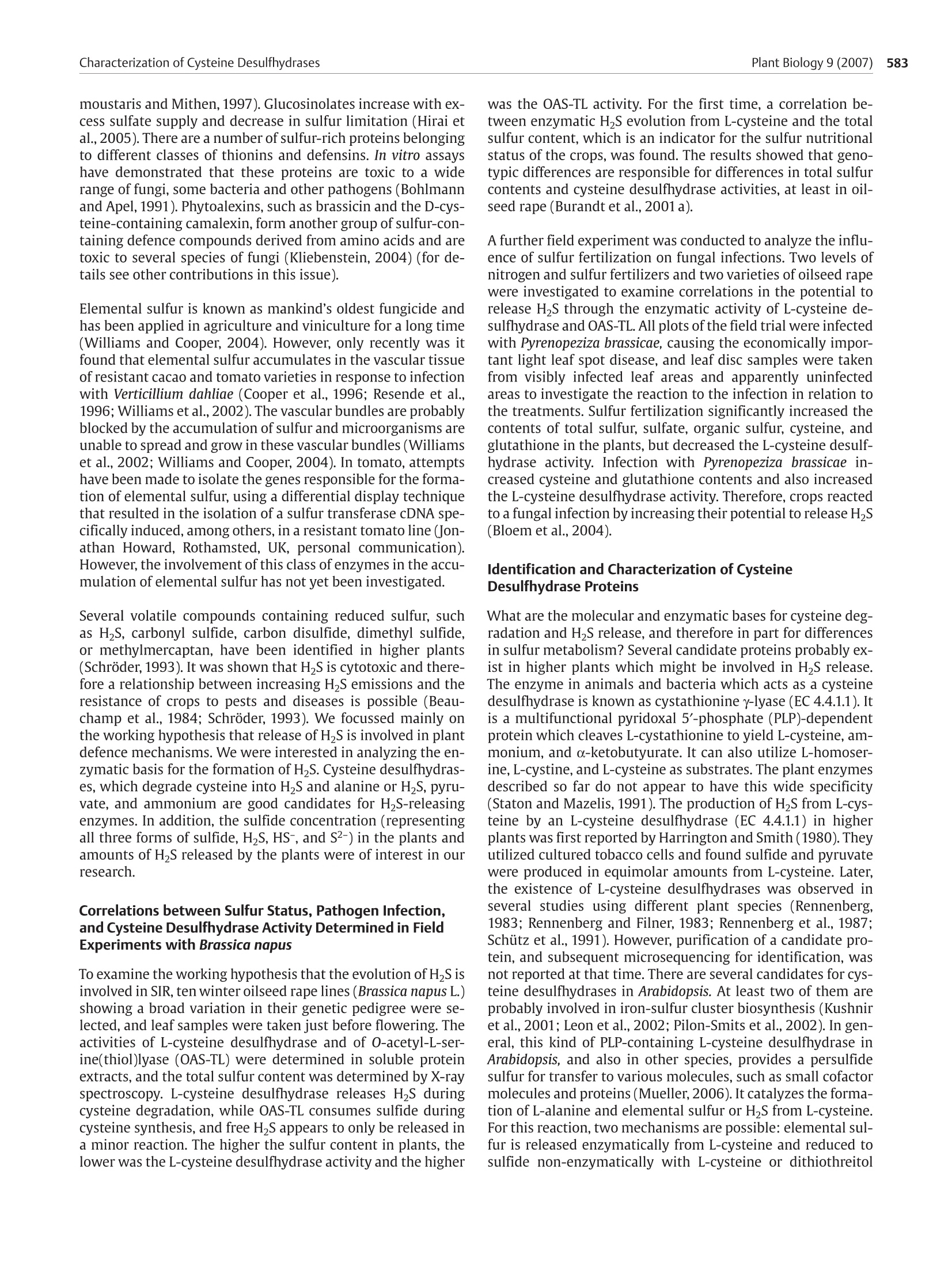
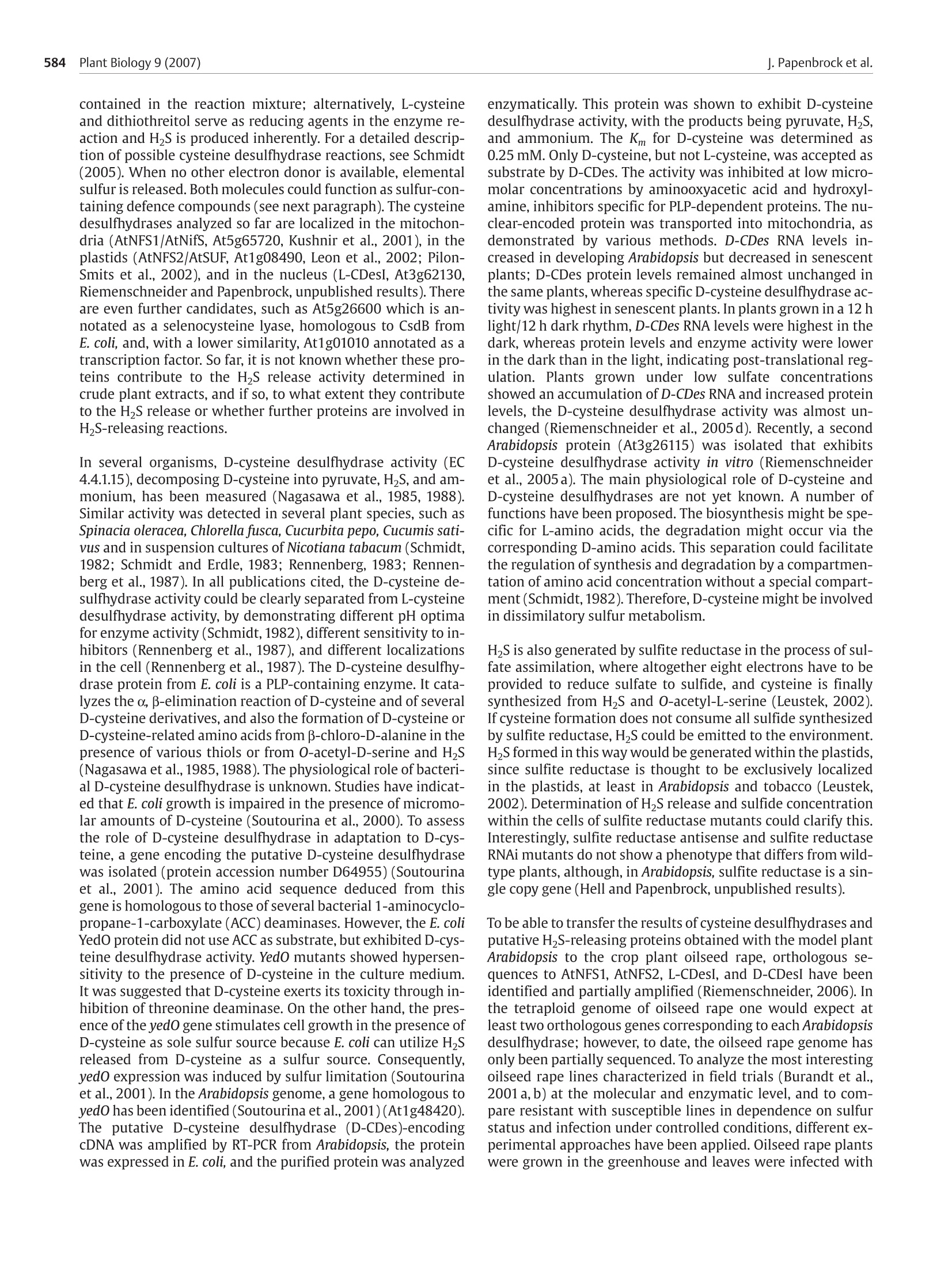
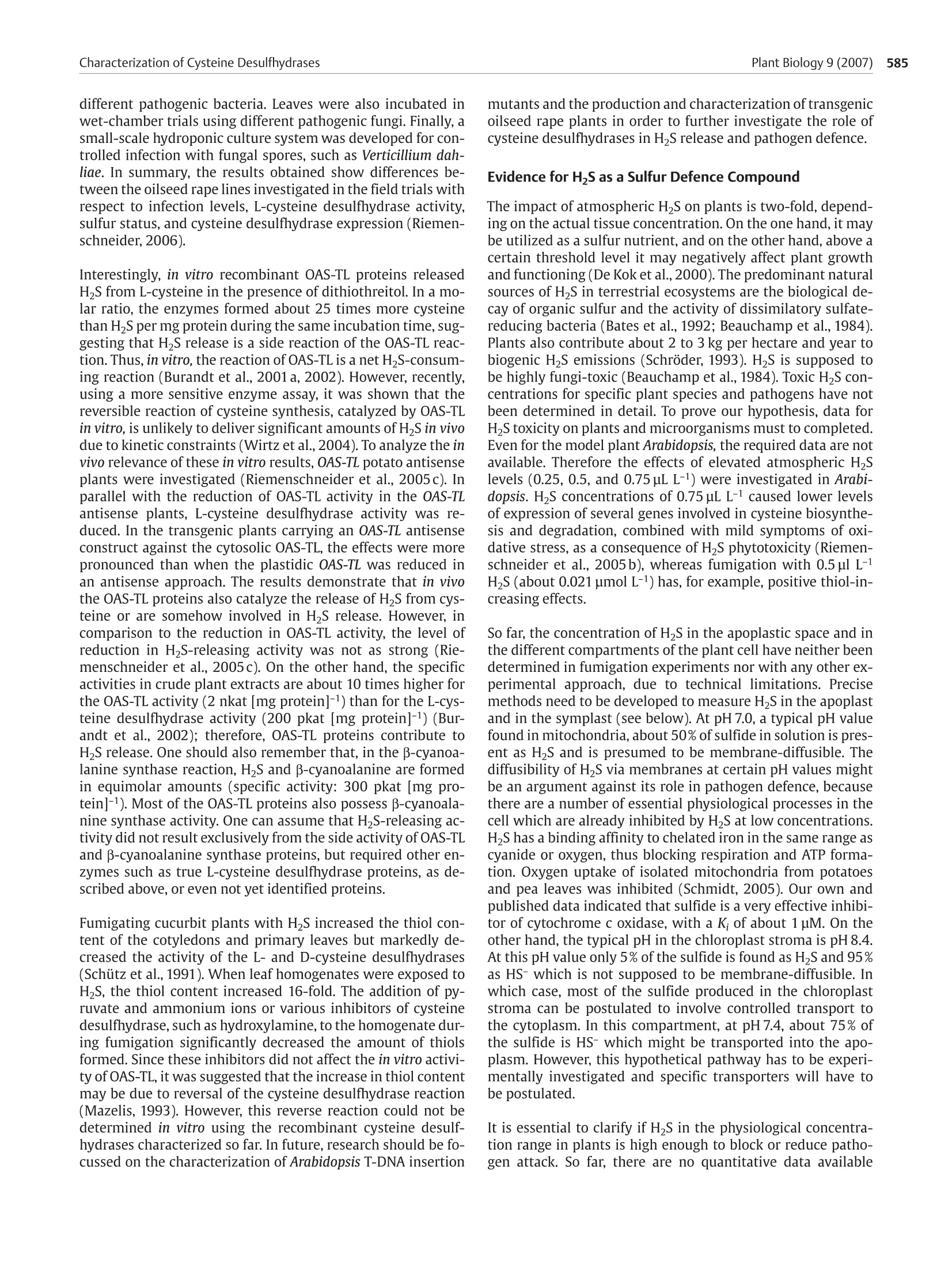

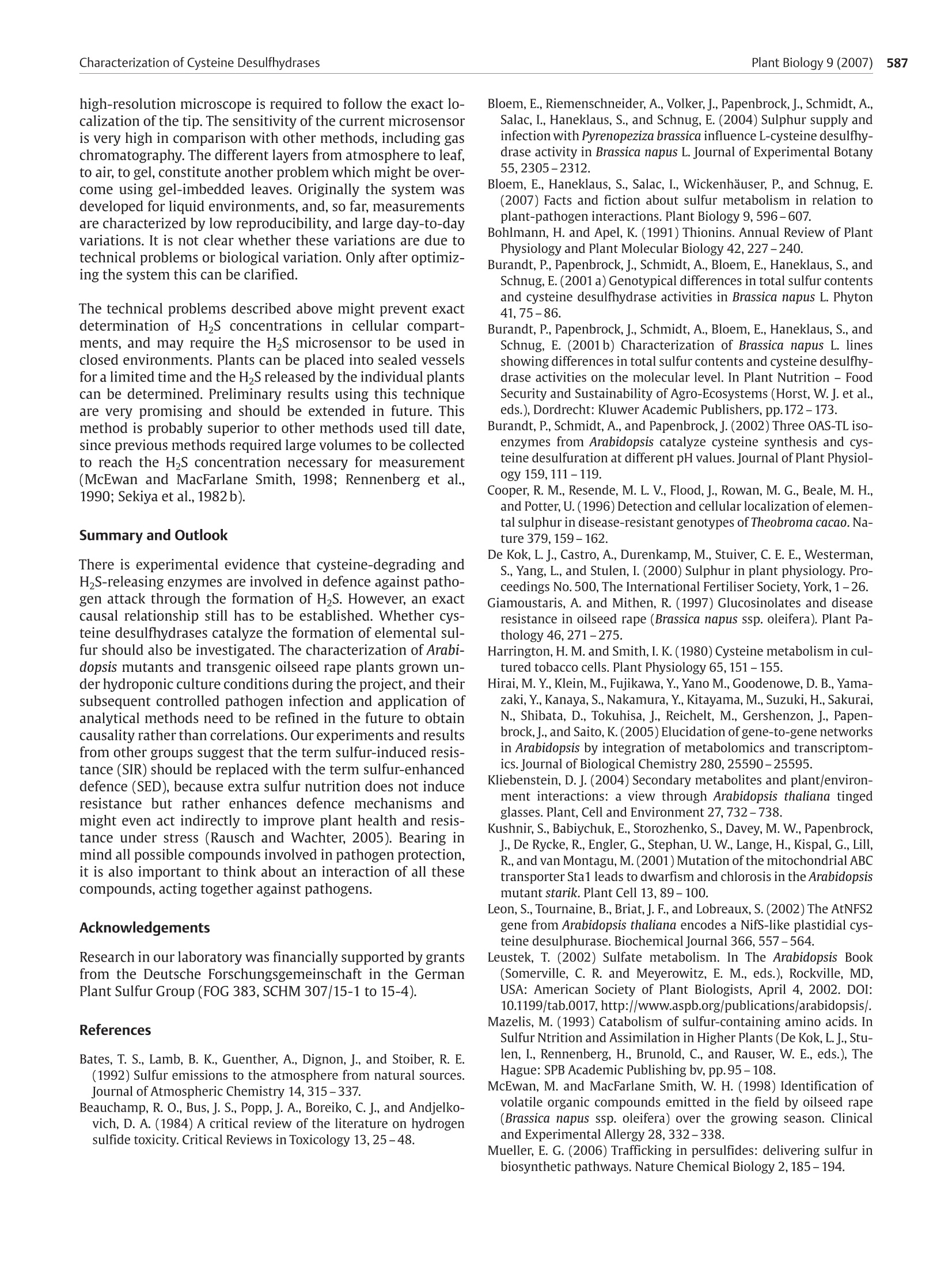
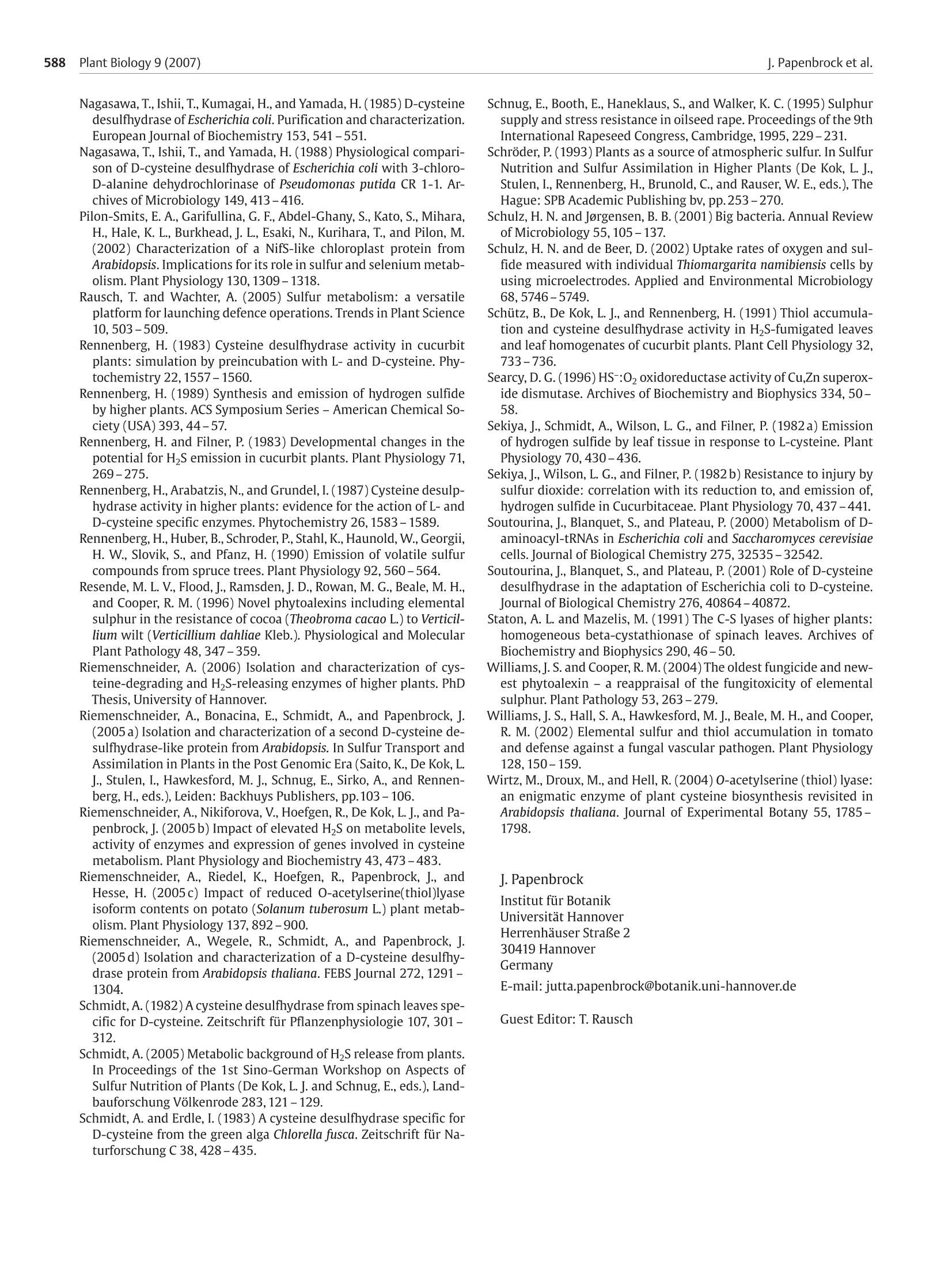
还剩5页未读,是否继续阅读?
上海谓载科技有限公司为您提供《植物组织中硫化氢检测方案(其他电化学仪)》,该方案主要用于其他中硫化氢检测,参考标准--,《植物组织中硫化氢检测方案(其他电化学仪)》用到的仪器有丹麦unisense硫化氢测量仪
推荐专场
相关方案
更多











